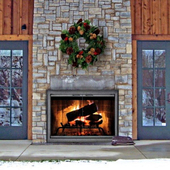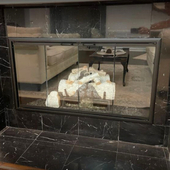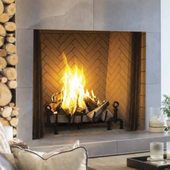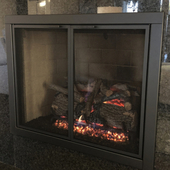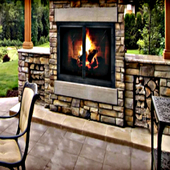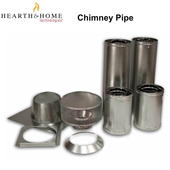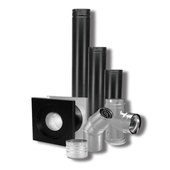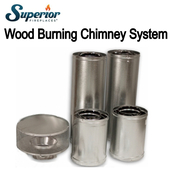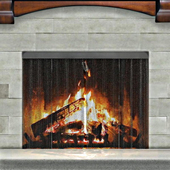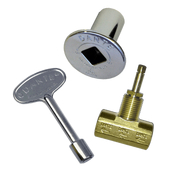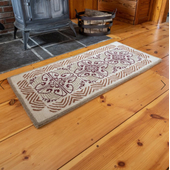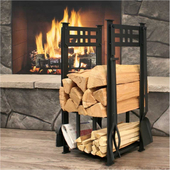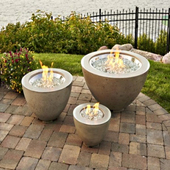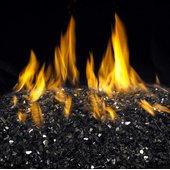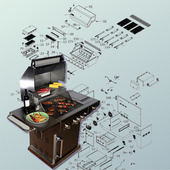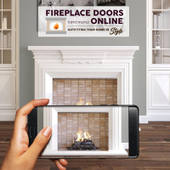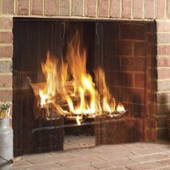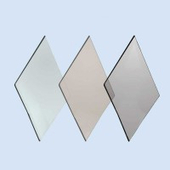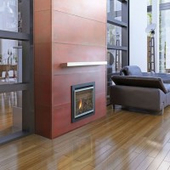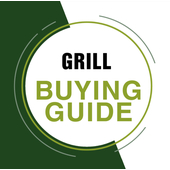Refine search
DirectVent® Pro: The Ultimate Co-Axial Venting System for Gas and Propane Stoves and Fireplaces
Experience unmatched design and engineering excellence with DirectVent® Pro, the state-of-the-art coaxial venting system designed for use with gas or propane stoves and fireplaces. Boasting a stunning design, this innovative solution redefines your home's heating experience. DirectVent® Pro is a trusted choice, preferred by nearly every major stove and fireplace manufacturer in the United States and Canada. With a wide array of termination cap options, it delivers both performance and style, making it the ultimate choice for venting your gas or propane appliances.
Key Features:
- Seamless Inner Connections: DirectVent® Pro features tight inner connections that ensure exceptional performance without the need for gaskets or sealants, unless otherwise specified by the appliance manufacturer.
- Sleek Finish: All black pipe lengths, pipe extensions, and elbows come with laser-welded outer wall seams, resulting in a clean and sleek finish that adds an elegant touch to any interior.
- Low-Profile Locks: The low-profile locks, along with no hems or beads, create a visually appealing product that complements your interior design effortlessly.
- Materials and Construction:
- Inner Wall: Constructed with a durable 0.020" aluminum inner wall.
- Outer Wall: Crafted from robust 0.018" galvanized steel for maximum longevity.
- Painted Outer Walls: Outer walls are made of laser-welded 0.018" galvalume steel, and stainless steel and copper options are also available.
- Efficient Design: The outer pipe brings combustion air to the appliance, while the inner pipe efficiently exhausts flue gases to the outside. No gaskets or sealants are required, unless specified by the appliance manufacturer.
- Clearances: Clearances are specified by the appliance manufacturer, ensuring the safety and proper functioning of your system.
- Diameter: DirectVent® Pro is available in a 4" x 6 5/8" diameter.
- Listings: DirectVent Pro, when combined with a gas appliance, has been rigorously tested and listed as a decorative gas appliance system or as a direct vent heater system by major testing agencies such as UL, CSA, Warnock Hersey, or OMNI. Always consult your appliance manufacturer for approval.
Planning Your Installation:
For vertical gas stove installations, measure the height from the stove outlet to the ceiling to determine the length of black pipe required. Select a ceiling support/wall thimble cover or a cathedral ceiling support box.
Determine the length of galvanized pipe required by measuring the ceiling thickness and the vertical rise in an attic or second story. Firestops are necessary at each floor level beyond the first-floor ceiling support/wall thimble cover or cathedral ceiling support box. If an offset is needed to avoid obstructions, use a pair of 45° elbows and proper support.
Measure the roof pitch and select the appropriate flashing and storm collar. Ensure the minimum height above the roof is met.
For horizontal installations, consult the appliance manufacturer's instructions for minimum rise and maximum horizontal run. A snorkel termination may be used if height restrictions apply. Select the appropriate Horizontal Termination Cap as per the appliance manufacturer's installation instructions.
To protect vinyl siding, consider a vinyl siding standoff. Always refer to the appliance manufacturer's instructions for wall thimble and firestop requirements.
Design Recommendations:
Ensure that the inner and outer pipe diameters match the appliance's outlet size.
Consult the appliance manufacturer's installation instructions to confirm allowable vent configurations and any restrictions.
Maintain the minimum clearances (air-space) specified in the appliance manufacturer's instructions between the vent pipe and nearby combustibles. Use proper support and bracing.
Comply with local building codes and have your venting system inspected for added safety.
Frequently Asked Questions:
Q: Is professional installation required for DirectVent® Pro?
A: Professional installation is recommended to ensure safety and compliance with local building codes. However, if you have experience with similar installations, you may be able to install it yourself following the provided instructions.
Q: Can DirectVent® Pro be used with both gas and propane appliances?
A: Yes, DirectVent® Pro is designed to work with both gas and propane stoves, heaters, and fireplaces.
Q: Do I need additional components for installation, or is everything included in the kit?
A: DirectVent® Pro kits typically include the essential components, but you may need additional accessories depending on your specific installation requirements. Always consult the installation instructions and your appliance manufacturer's guidelines for a complete list of necessary components.
Q: Can I install DirectVent® Pro through a cathedral ceiling?
A: Yes, DirectVent® Pro offers options for cathedral ceiling installations. Be sure to select the appropriate cathedral ceiling support box and follow the installation instructions.
Q: Is DirectVent® Pro suitable for outdoor installations?
A: No, DirectVent® Pro is intended for indoor use with gas and propane appliances. For outdoor installations, consult the manufacturer's outdoor venting solutions.
For more questions and guidelines contact our Fireplace Doors Online tech department Safety and proper installation is a top priority, so always follow the manufacturer's recommendations and consult with a professional if needed.












